Peoples’ cultures globally have long held a mystical reverence for the Moon, especially for one particular lunar stage – the full moon. Scientifically, the full moon is a phase where the Moon, from Earth’s perspective, is fully illuminated, positioned opposite the Sun, and therefore on the far side of the Earth from the Sun. This circumstance takes place about every 29.5 days. Throughout history, the full moon has been linked to various myths, legends, spooky tales, and superstitions. Although numerous experts, scientists, astronomers, and scholars have researched this enigmatic occurrence over centuries, the vast majority have found no correlation between the full moon and human behavior or Earth’s life in general. Despite this, the expression “it must be a full moon” continues to be used widely when peculiar events occur. For those intrigued by this puzzling lunar phase, go on and delve into this article, as it uncovers 25 Full Moon Myths and Facts You Might Not Know.

The full moon is often thought of as an event of a full night's duration, but this is misleading because the Moon seen from Earth is continuously becoming larger or smaller (though much too slowly to notice with the naked eye). Its absolute maximum size occurs at the moment when the expansion has stopped.
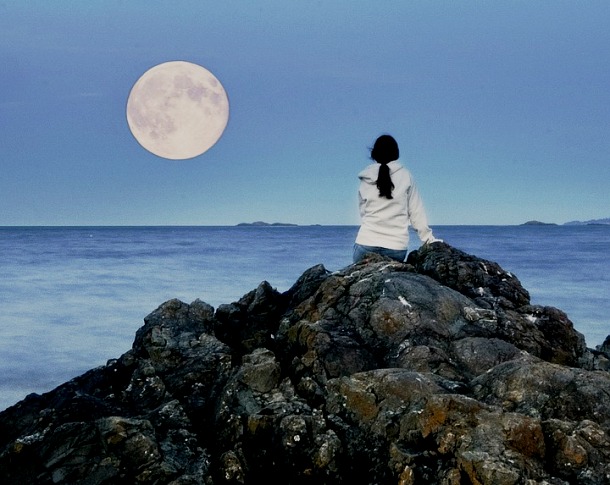 Source: en.wikipedia.org, image: pixabay.com
Source: en.wikipedia.org, image: pixabay.com As the full moon occurs every 29.5 days, February is the only month that can occur without a full moon. All of the other months are guaranteed to witness at least one full moon.
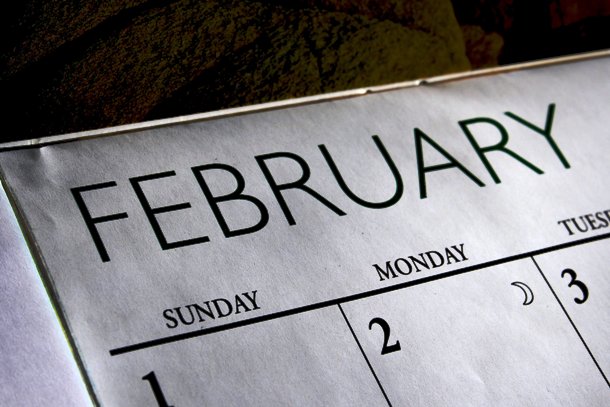 Source: en.wikipedia.org, image: commons.wikimedia.org
Source: en.wikipedia.org, image: commons.wikimedia.org When the full moon coincides with the Moon´s closest approach to Earth on its elliptical orbit, a rare phenomenon known as the supermoon occurs. The most recent occurrence of this phenomenon was on September 27–28, 2015, while the next time will be in 2033.
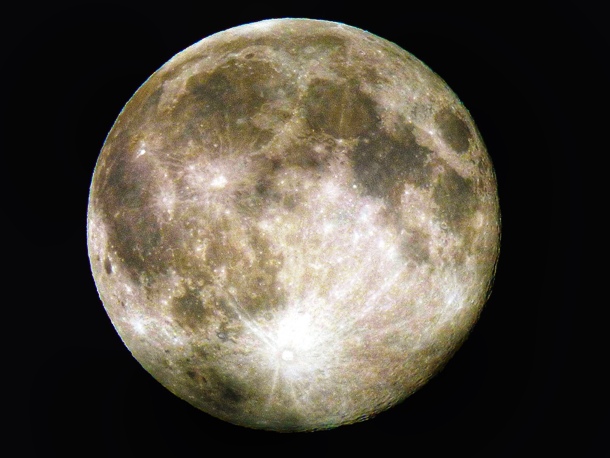 Source: en.wikipedia.org, image: commons.wikimedia.org
Source: en.wikipedia.org, image: commons.wikimedia.org The full moon is often associated with temporal insomnia. In the past, the reason was obvious; people did not sleep well during the full moon due to the bright light it emitted. These days, however, with all the artificial lights around us, the full moon´s light can hardly be the cause of the sleep deprivation that many people still suffer from during this lunar phase.
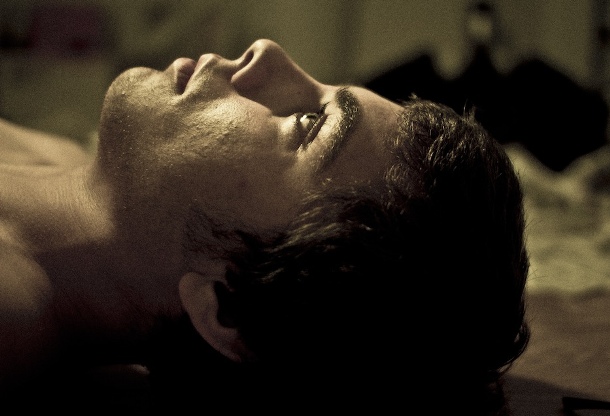 Source: en.wikipedia.org, image: flickr.com
Source: en.wikipedia.org, image: flickr.com It is sometimes claimed that surgeons used to refuse to operate during the full moon because of the increased risk of death of the patient through blood loss. A study carried out in Barcelona found a statistically significant correlation between lunar phase and hospital admissions due to gastrointestinal bleeding.
 Source: en.wikipedia.org, image: commons.wikimedia.org
Source: en.wikipedia.org, image: commons.wikimedia.org The full moon is considered unlucky if it occurs on Sunday but lucky if it occurs on Monday. In fact, the name of Monday is derived from Old English “Mōnandæg” and Middle English “Monenday,” which mean "moon day."
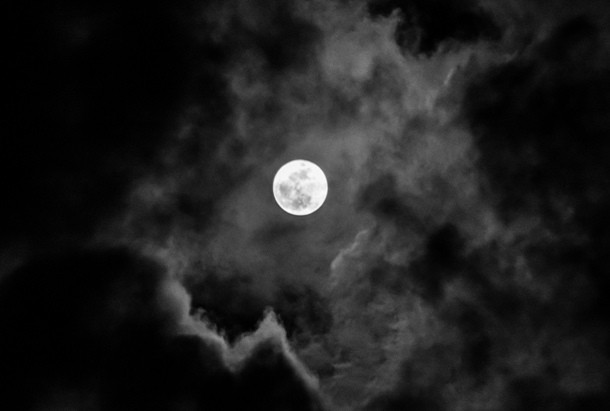 Source: en.wikipedia.org, image: commons.wikimedia.org
Source: en.wikipedia.org, image: commons.wikimedia.org The full moon has been thought to cause insanity and even more famously, lycantrophy. One of the most popular beliefs was that a man or woman could turn into a werewolf if he or she, on a certain Wednesday or Friday, slept outside on a summer night with the full moon shining directly on his or her face.
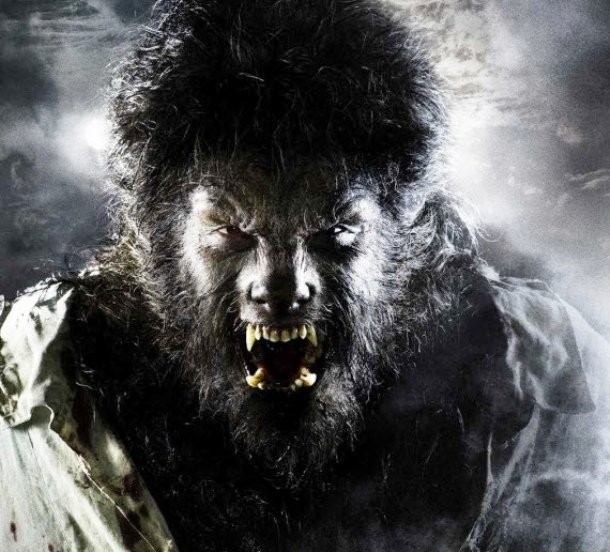 Source: en.wikipedia.org, image: flickr.com
Source: en.wikipedia.org, image: flickr.com The RAF (Royal Air Force – the United Kingdom's aerial warfare force) used the light emitted by the full moon to launch their attack on a German city of Lubeck during World War II on the Saturday night of 28 March.
 Source: spiritedenterprise.com, image: en.wikipedia.org
Source: spiritedenterprise.com, image: en.wikipedia.org Dogs are known to bark and howl more during the full moon, but they might also be more aggressive. A study carried out by the Bradford Royal Infirmary (a teaching hospital in the UK) found that dog bites are up to twice as common during a full moon than on other nights.
 Source and image: en.wikipedia.org
Source and image: en.wikipedia.org The full moon is the brightest object in the night sky. It has an apparent magnitude (measure of a space object´s brightness as seen by an observer on Earth) of -12.74 compared with the Sun's of -26.74.
 Source: en.wikipedia.org, image: pixabay.com
Source: en.wikipedia.org, image: pixabay.com It has been suggested that the full moon affects humans in the same way as it does to the oceans via the tidal force as the human body is about 75% water, but in fact, the tidal effect is totally insignificant on such a small scale.
 Source: en.wikipedia.org, image: commons.wikimedia.org
Source: en.wikipedia.org, image: commons.wikimedia.org When there happen to be two full moons within one calendar month, the second one is called the blue moon. This phenomenon occurs once every 3 years on average.
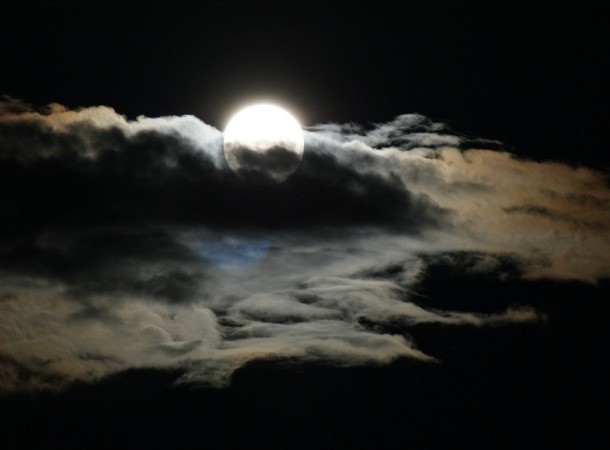 Source: spiritedenterprise.com, image: pixabay.com
Source: spiritedenterprise.com, image: pixabay.com One of the most common superstitions suggests that during the full moon more babies are born than on other nights. No scientific studies have proved that claim though.
 Source and image: en.wikipedia.org
Source and image: en.wikipedia.org When the full moon coincides with a total lunar eclipse, it appears red. In this phenomenon known as the red moon, the only light seen is refracted through the earth's shadow. This light looks red for the same reason that the sunset looks red, due to rayleigh scattering of the more blue light.
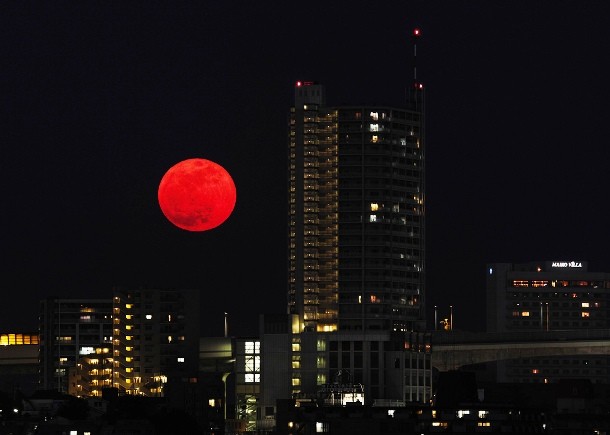 Source: en.wikipedia.org, image: flickr.com
Source: en.wikipedia.org, image: flickr.com The full moon was believed to make people go crazy. The world “lunatic” was used to describe a person who was considered mentally ill, dangerous, foolish, or unpredictable - conditions once attributed to lunacy. The word derives from the Latin word “lunaticus” meaning "moonstruck."
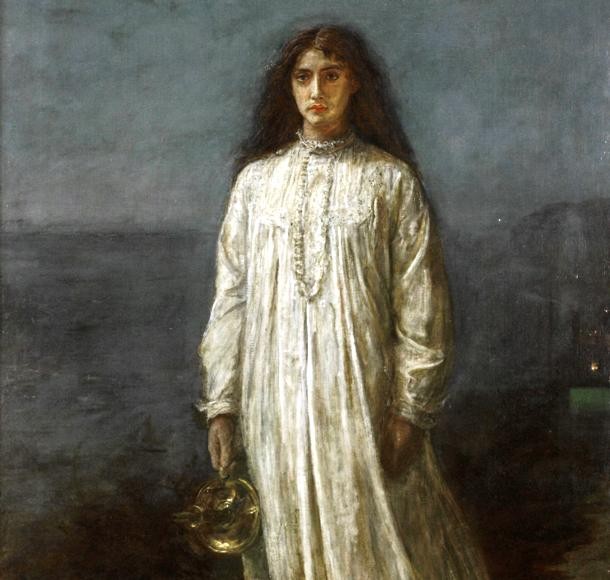 Source and image: en.wikipedia.org
Source and image: en.wikipedia.org Some wild animals behave differently during a full moon. For example, lions usually hunt at night, but after a full moon, they're more likely to hunt during the day, likely to make up for the tough going on a moonlit night.
 Source: livescience.com, image: en.wikipedia.org
Source: livescience.com, image: en.wikipedia.org The full moon is often associated with a higher occurrence of strange things, but this belief is probably a misconception. People have this feeling because they pay better attention to unusual things during the full moon. In fact, strange things happen during the rest of the month too, but people usually don't tie them to celestial events.
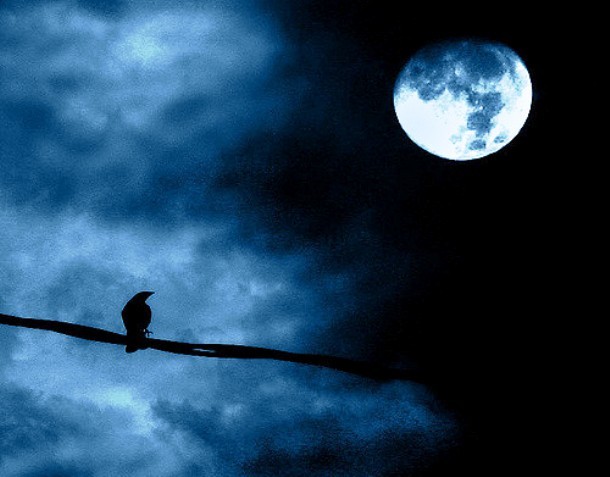 Source: livescience.com, image: flickr.com
Source: livescience.com, image: flickr.com There are several full moon celebrations in different parts of the world. One of the most popular is held on the island of Ko Pha Ngan in Thailand. Mostly attended by tourists, the Full Moon Party attracts tens of thousands of people every full moon night.
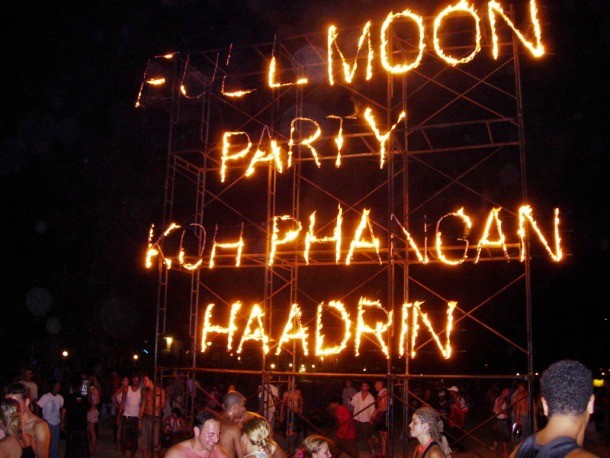 Source and image: en.wikipedia.org
Source and image: en.wikipedia.org People have noticed several pareidolic images of human faces, heads, or bodies during the full moon. The images are actually composed of the dark areas of the lunar maria (basaltic plains) and the lighter highlands of the lunar surface.
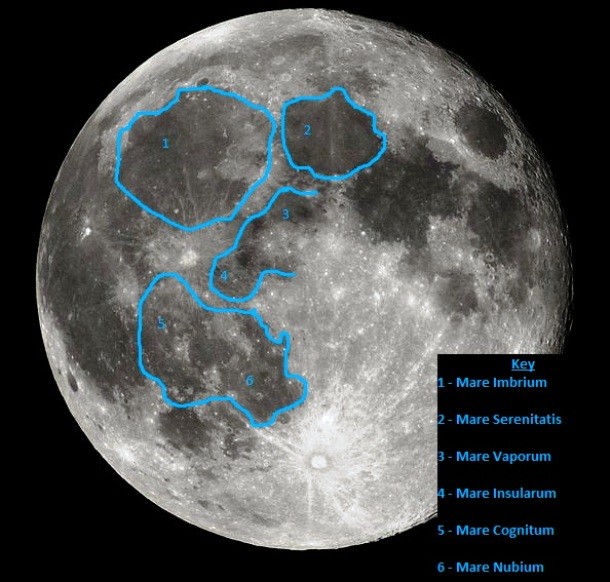 Source and image: en.wikipedia.org
Source and image: en.wikipedia.org The Lunar Society of Birmingham, a dinner club and informal learned society of prominent figures in the Midlands Enlightenment who met regularly between 1765 and 1813 in Birmingham, England, took its name from the practice of meeting during the full moon, as the extra light made the journey home easier and safer in the absence of street lighting.
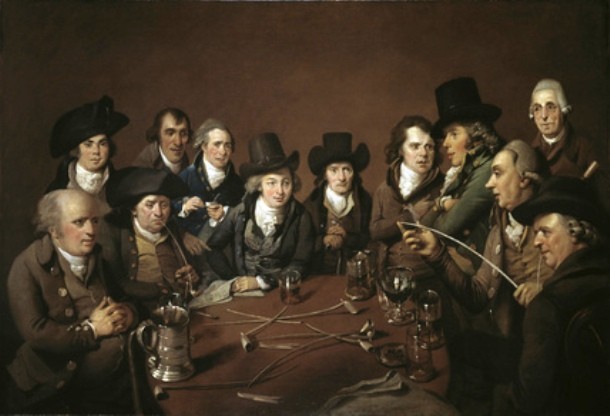 Source and image: en.wikipedia.org
Source and image: en.wikipedia.org The honeymoon is named after the full moon in June. As it fell between the planting and harvesting of crops, this was traditionally the best month to get married.
 Source: isciencetimes.com, image: commons.wikimedia.org
Source: isciencetimes.com, image: commons.wikimedia.org Full moons are sacred in Sri Lanka. Legend has it that Buddha’s birth, enlightenment, and passing to nirvana occurred on full moons. On a full moon night, shops are closed, alcohol is not served, no sport matches can be played, and any killing — including fishing — is forbidden.
 Source: salon.com, image: commons.wikimedia.org
Source: salon.com, image: commons.wikimedia.org Pagans believe the most mystical time at Stonehenge is when the full moon wanes, leaving the earth to be reunited with her lover, the sun at dawn.
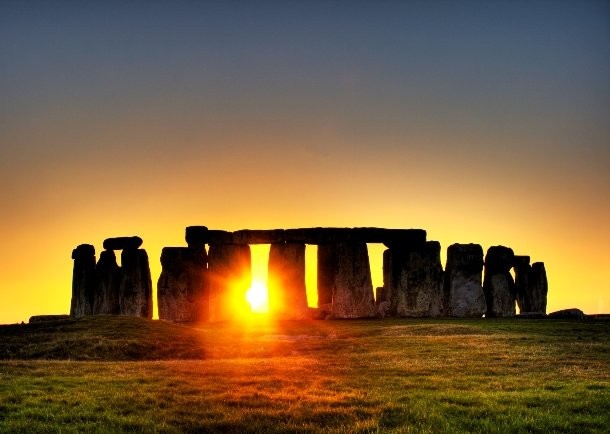 Source: independent.ie, image: commons.wikimedia.org
Source: independent.ie, image: commons.wikimedia.org Although the full moon has not been proved to directly affect our mental state, 80% of nurses and 63% of doctors said they saw more patients with mental health problems during a full moon than at any other time. The survey was carried out at the Université Laval in Québec City, Canada.
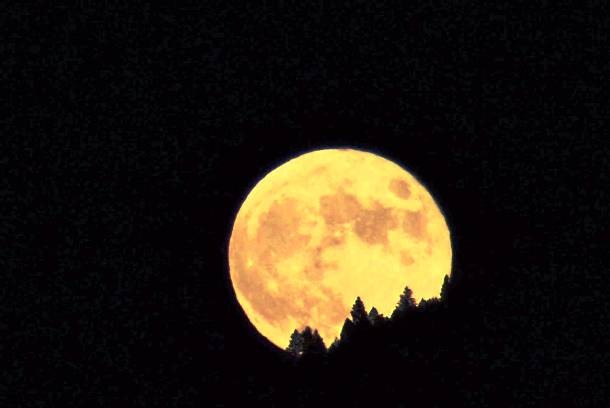 Source: dailymail.co.uk, image: youtube.com
Source: dailymail.co.uk, image: youtube.com It is a common misconception that the first Apollo landing occurred during a full moon. This did not occur until more than a week later.
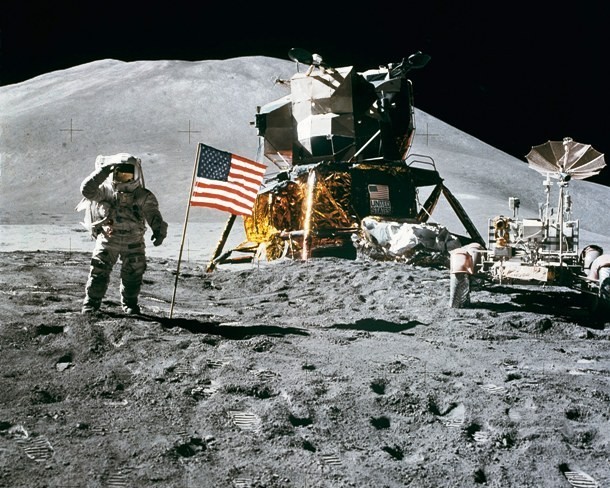 Source: independent.ie, image: commons.wikimedia.org
Source: independent.ie, image: commons.wikimedia.org 


























